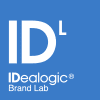The meaning of the word “Brand” has evolved a great deal over time. The term originally referred to the practice of burning a mark onto something in order to designate ownership. It then evolved to include marks or stigmas put upon criminals or those in disgrace (The Scarlet Letter, anyone?). As early as the 1200’s, Italians began putting unique watermarks on paper. This was, perhaps, the birth of the definition of branding for which most of us think of today. According to the American Marketing Association, this type of branding is defined as a “name, term, design, symbol, or any other feature that identifies one seller’s good or service as distinct from those of other sellers.” In the 1900’s, branding also evolved to include the term “trademark.” According to Wikipedia, there are several companies that claim to have created the world’s first trademark, one of which dates all the way back to 1731.
The evolution of branding entered a new phase during the Industrial Revolution. At that time, factory manufacturing was a booming business; however at first, factories’ mass produced goods were not as trusted as those products made and sold by local sellers. Factory owners needed to gain the trust and loyalty of buyers to sway them from purchasing products from local suppliers, so they learned to build product–consumer relationships by promoting their products in a familiar way and earning brand loyalty within the household. Brands simply symbolized particular products, such as Coca-Cola, Kellogg’s cereal, and Campbell soup. Times being as they were (without regulated standards such as quality control) buyers found it rather easy to distinguish superior goods from the inferior ones. Successful companies were those that proved their goods were of great quality and better than those of their competitors. Also many products were, for the most part, new or recently invented (soda pop, for example, and the convenience of canned soup), which offered companies what can be called a unique selling proposition (USP).
After awhile, new product and invention opportunities lessened; and various companies began to create their own versions of existing products. The edge of the USP era faded as businesses began to compete with each other over similar products. Companies had to change tactics, and began promoting brands using a new technique—the emotional selling proposition (ESP). They used the consumers’ brand loyalty and emotional attachments to their advantage. The BRAND became the selling tool instead of the product. By strengthening the psychological bond with the brand, companies were able to successfully ensure that customers would pick a particular brand over the myriad of competing brands in the market. Moreover, businesses saw that as new products were introduced under that brand name, the consumer felt an emotional loyalty, trust, and brand confidence to try the new product.
The brand name/customer connection inevitably caused a branding evolution to occur yet again: gradually, customer recognition shifted from brand names to the overall companies themselves. ESP gave way to the Organization Selling Proposition (OSP) as organizations themselves became the key factor for customer recognition. The image of the business or organization began to play a much larger role in the grand scheme of things than just a singular product or brand name. A company (Coca-Cola, for example) may have multiple products and brand names that it represents; but the company name is recognized, promoted, and valued as much as, if not more than, its lineup of products or brand names.
Through the popularity of a multitude of online mediums (websites, social media, review sites, etc.), customers now have the ability to directly interact with companies on a daily basis. Today’s brand evolution—the Experience Selling Proposition (XSP)—has taken effect, as companies cultivate brand awareness and loyalty through individual customer experience. The more consumers can interact with and become an active part of their favorite brands, the more their loyalty to the brand increases. As we see technology continue to advance in such an accelerated rate, companies must consistently adapt to change and embrace new ways to attract the consumer to the brand. Thus, the branding evolution shall continue its amazing journey.




[…] racconta questo articolo, il branding ha avuto un’evoluzione nel corso degli anni e si è adattato alle necessità di […]
[…] racconta questo articolo, il branding ha avuto un’evoluzione nel corso degli anni e si è adattato alle necessità di chi […]